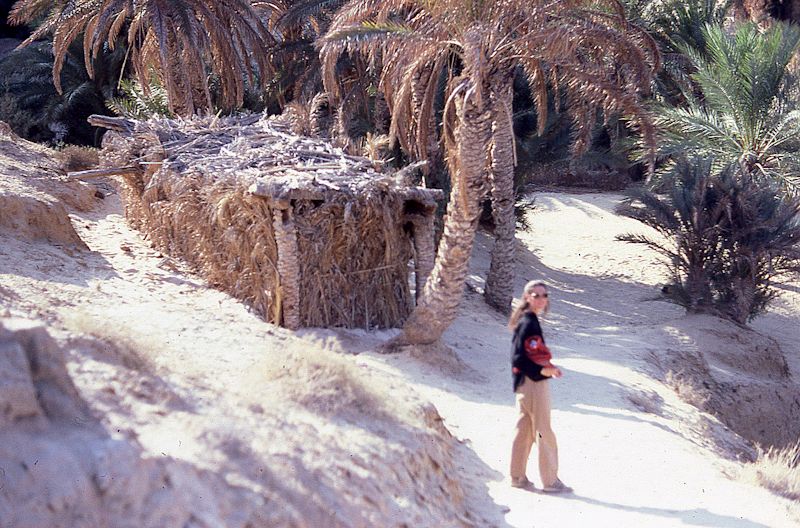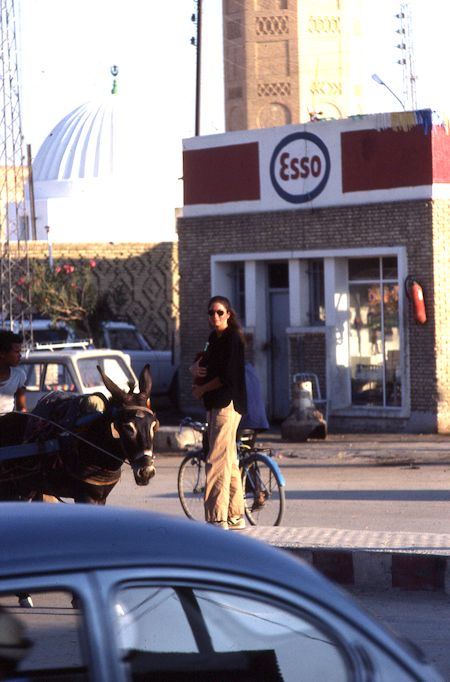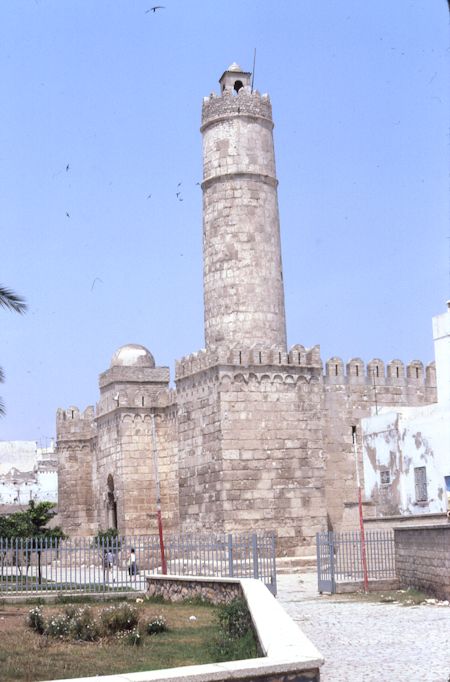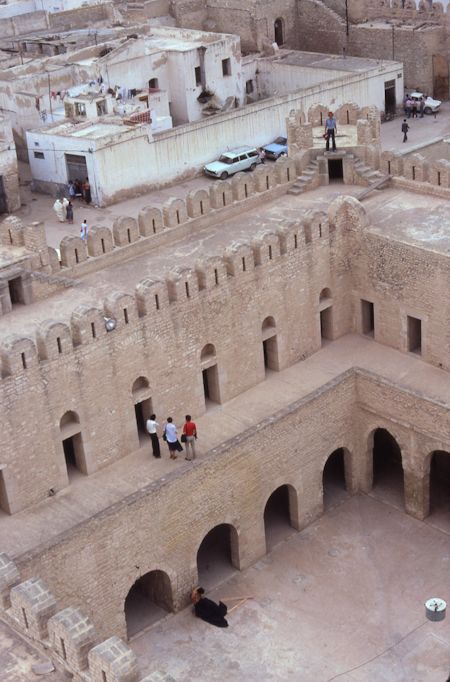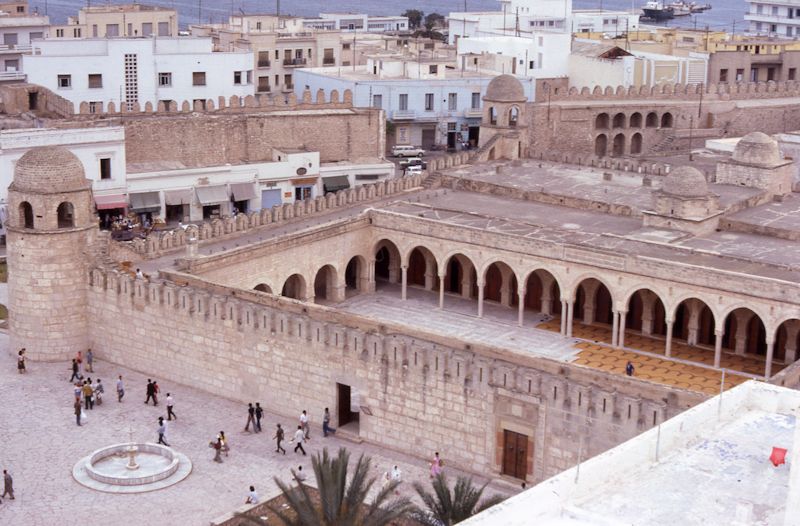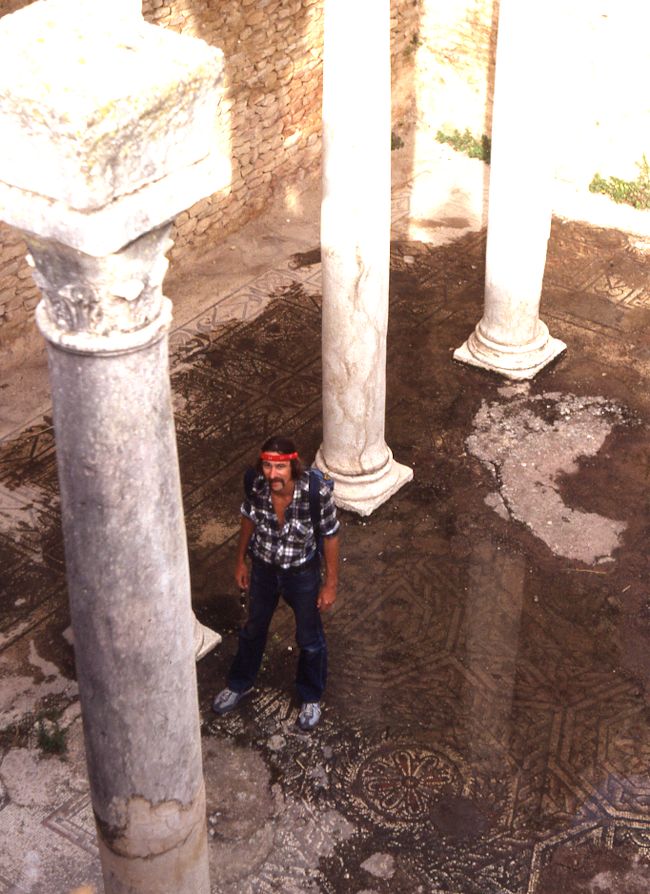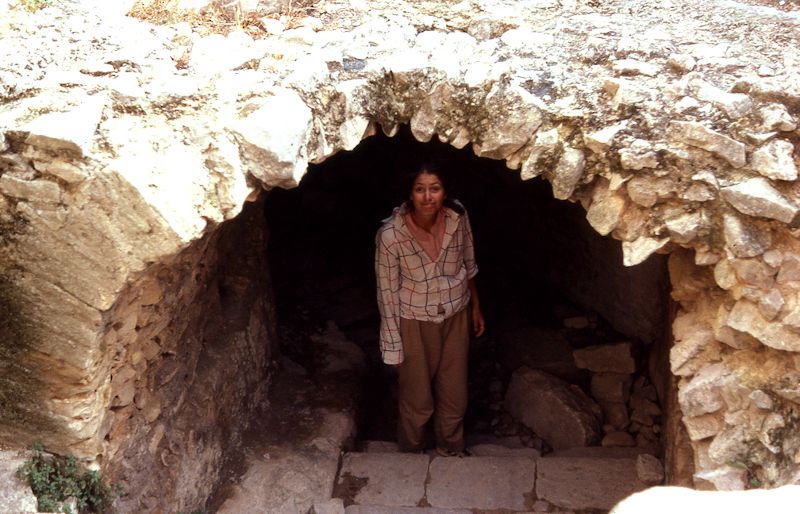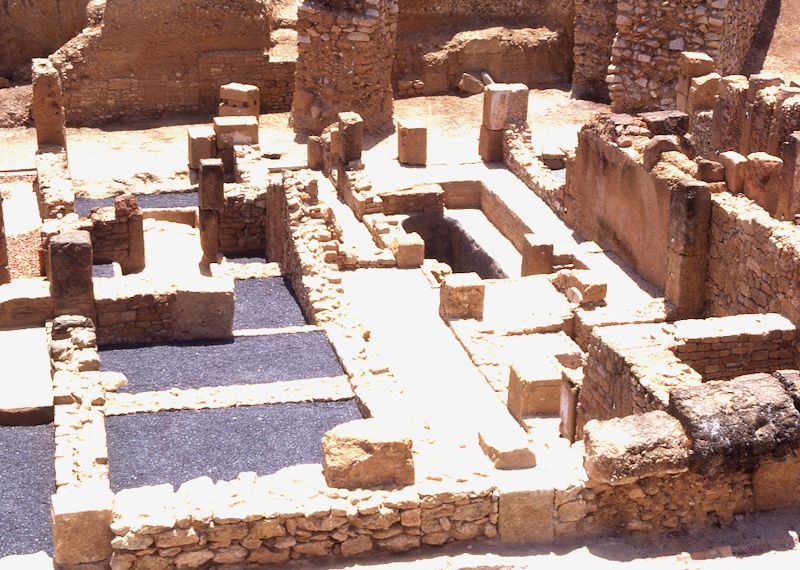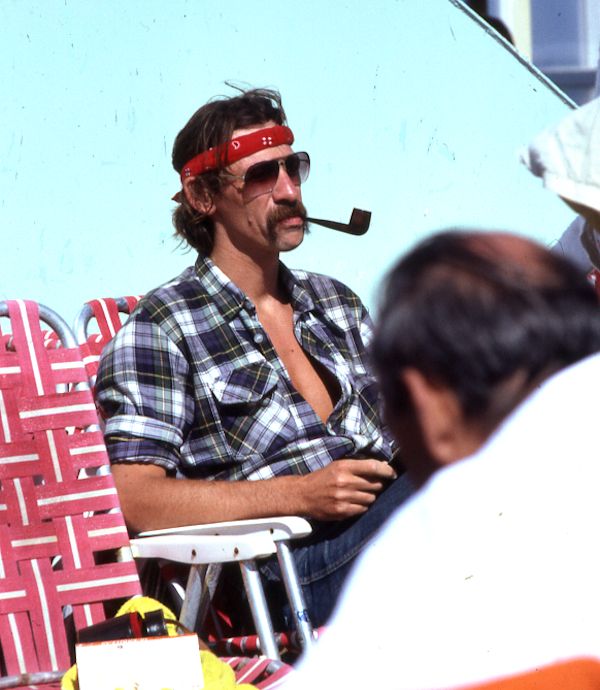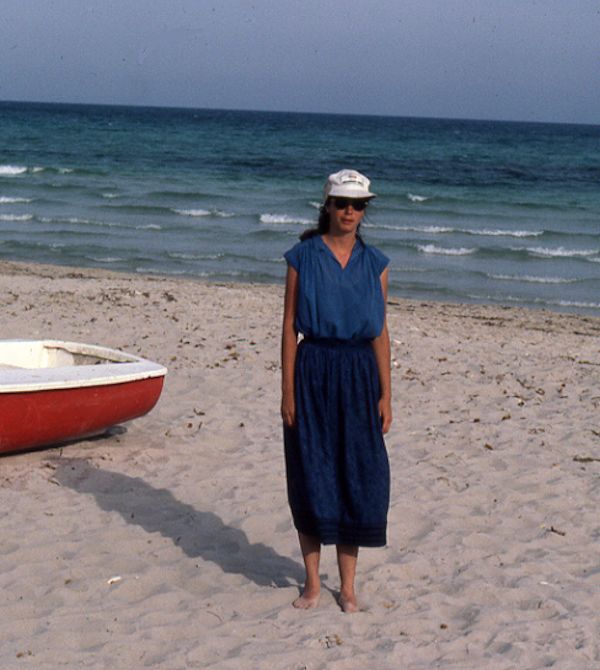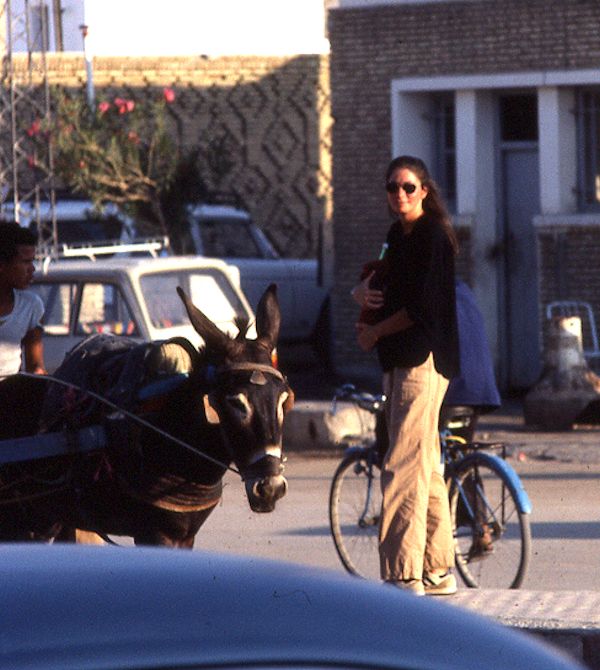You
may not find this terribly rewarding unless you're included here, so this is a
good time for casual and random browsers to turn back before they get too caught
up in the sweep and majesty of the proceedings and can't let go.
[Historical
note 1: in 1987, Mr Bourguiba was asked in a forceful manner to stop being President,
and Mr Ben Ali has been President ever since. Mr Ben Ali appears to be very efficient,
but he is certainly not avuncular.]
[Historical note 2: in 2011, Mr Ben Ali isn't there anymore either.]
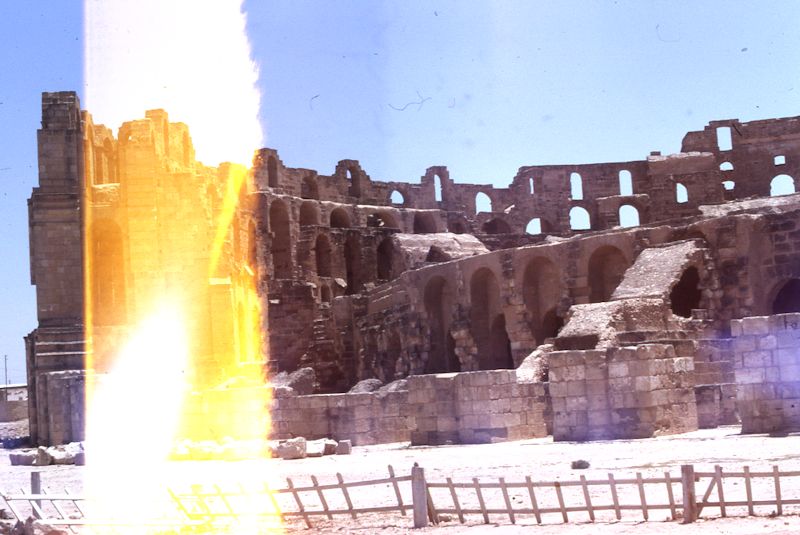
El
Djem, the Roman amphitheatre. Whilst taking the car-ferry across the Med
from Genoa, Italy, to Tunis, Mr Peck and traveling companion Jane met a German
engineer returning from home leave with his big new LandRover, back to his company's
engineering project in Libya. Our new friend, the German engineer, took home leave
about once a month, flying home via Frankfurt, and each time he came back to work
driving in his big LandRover (but never exactly the same
big LandRover). And in his leisurely progress from Tunis towards Libya,
our new friend offered to drop us off at the Isle of Djerba.
Sounded like a good deal.
This
is a badly damaged photograph of the incredible 30,000-seat Roman amphitheatre
at El Djem, about halfway down the Tunisian coast, between Sousse and Sfax.
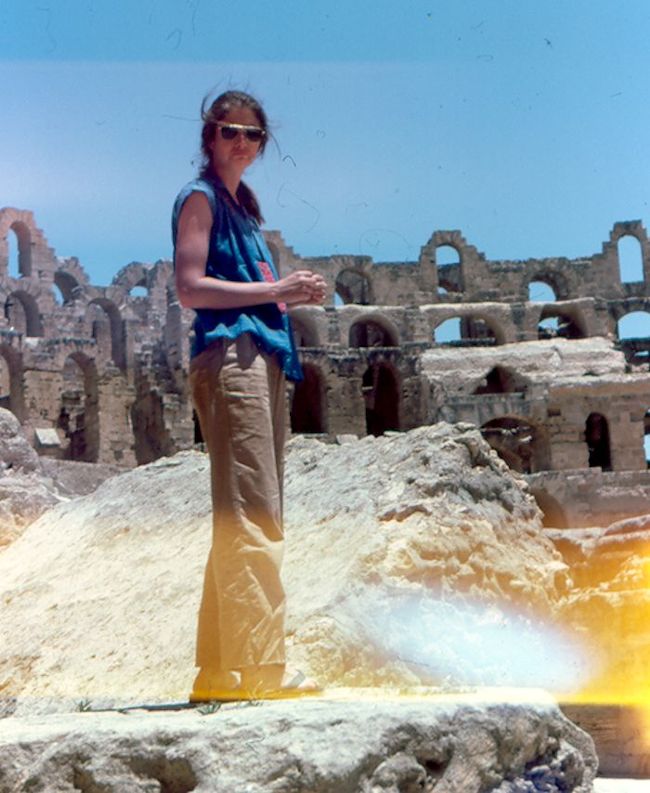
El
Djem. Traveling companion Jane expressed some doubt about the genuine Roman
coin being offered for sale by local boys, found, they said, in the sand thereabouts
and now available for sale only to selected visitors for slightly less than one
US dollar. Our traveling companion's views prevailed in this case, but to Mr Peck
it looked like a pretty good deal, a 2000-year-old Roman coin for less than a
dollar!
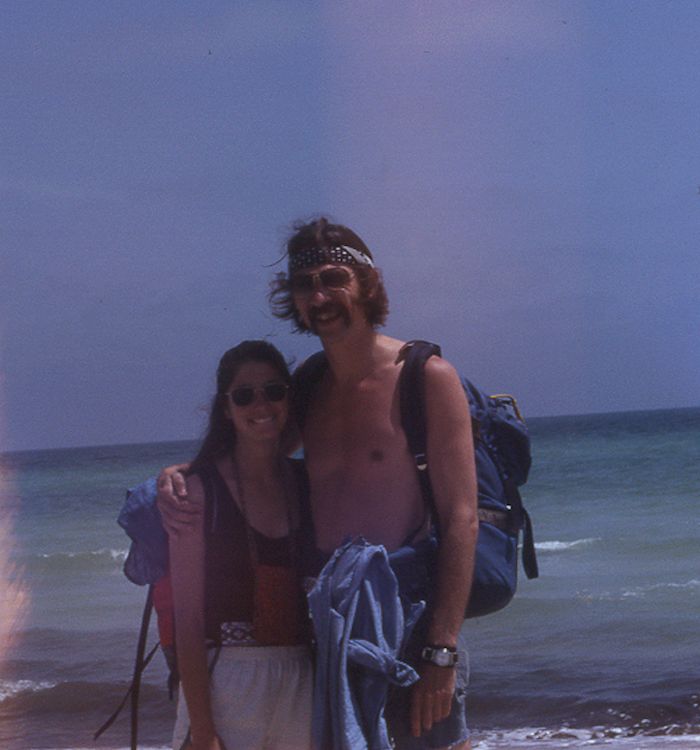
Djerba. Deposited by their German engineer friend at the outskirts of the Zone Touristique on the Isle of Djerba, the
travelers prepared to slip round the chain link fence of the tourist zone of big-group
hotels and find out what's going on downtown. 'Downtown', on the Isle of Djerba,
near the Libyan border, means Houmt Souk, the only
hefty town on the whole Homeric island.
(Legend says that Djerba was the model for the Isle of the
Lotus-Eaters in Homer's Odyssey. We saw only sand and a quaint kind of
mesquite, very bitter when chewed.)
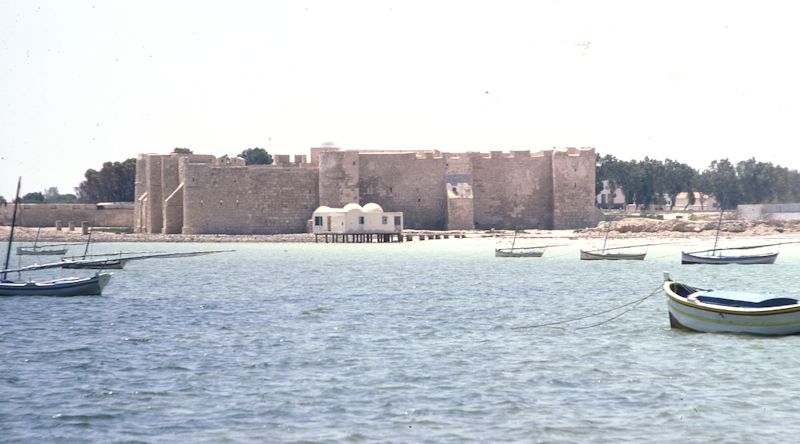
Houmt
Souk, El Borj. Near Houmt Souk, this is El Borj, "the fort",
a sturdy establishment constructed by the Spanish in Philip II's time, basically
the 1560s, to try to keep piracy down in the Med. Piracy's down now -- the forts
and patrol boats are concentrating mainly on asylum seekers.

El
Borj, Djerba. Anti-terrorist Homeland Security in the 16th century, with
long lines, and everybody probably had to take off their shoes and get wanded.

The
Vision of El Borj
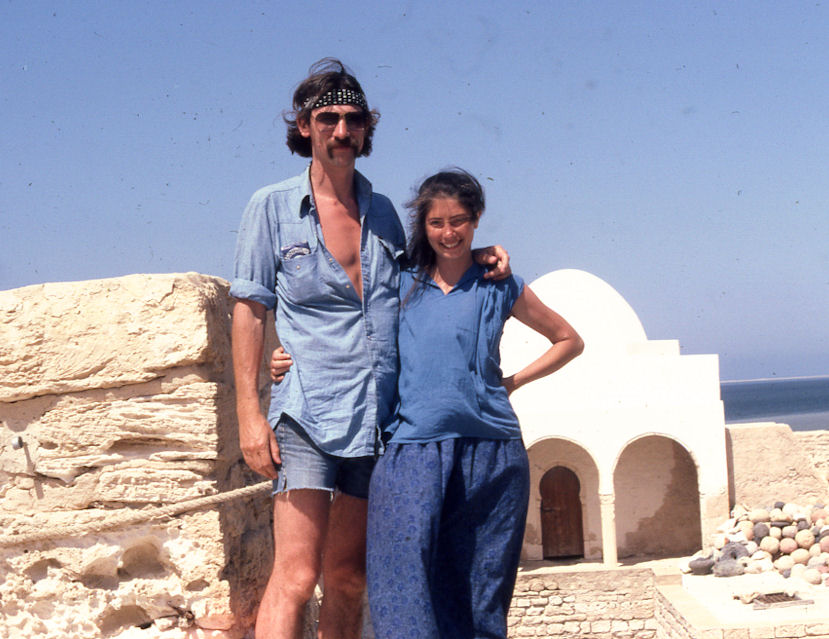
The
narrator and traveling companion atop El Borj

The
scenic view from the "New Hotel" in Houmt Souk into the village square,
where all the males congregated to watch TV in the evenings. (No females, of course
-- perhaps Islam was intended to spare them from TV.) In the evening, hundreds
of males assembled like clockworks to drink tea and talk about things, and then
to gaze enrapt at the television set up outside. No Baywatch reruns on this evening, though -- they were watching President Bourguiba
instructing them, with props and vigorous demonstrations, on how teeth are properly
to be brushed.
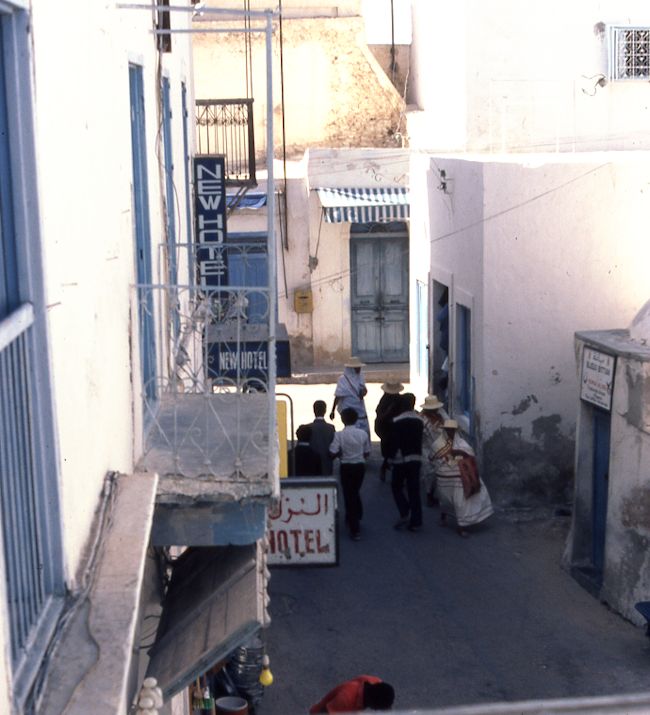
From
our room at the New Hotel. The price was right (1 dinar, about US$2). No toilets
in the hotel were in working order and most invoked the gag reflex anyway, but
no problem! The desk clerk simply suggested that we try the facilities in the
hotel next door.
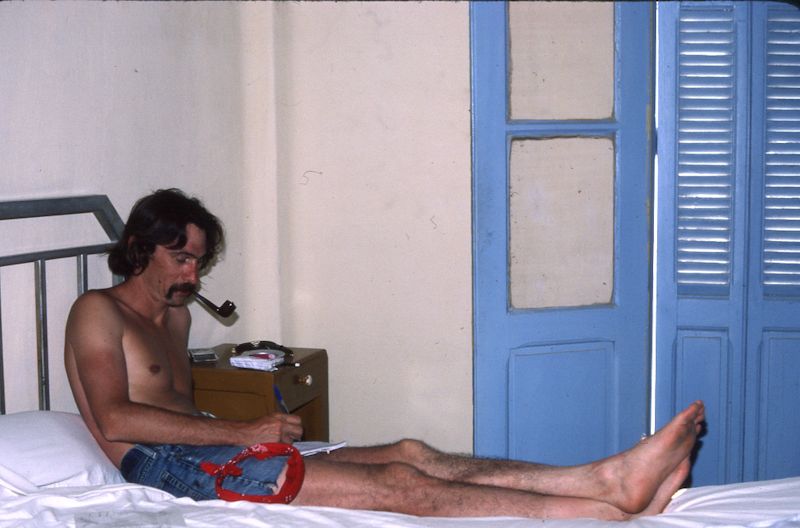
Recording the day's events

Where
is El Kantara? On the map, it looks like a thriving
metropolis at the southeast corner of the Isle of Djerba. The travelers leapt
eagerly off the bus, despite the incredulous driver's shaking head, to find --
no metropolis, in fact no anything, just a causeway ('el kantara') to the mainland.
As there are no other towns on the island, they set out with waning enthusiasm
walking back up the east side of the island towards the Zone Touristique, in hopes
of flagging a compassionate motorist.

Which,
halfway northward along the coast, they did. A Libyan family picked them up in
a station wagon, bound for the Dar Djerba ("Djerba Palace"), the most
expensive hotel in the Zone Touristique on the northeast coast, with a dead goat
hanging from the roof of the car. They were checking into the Djerba Palace for
a holiday and bringing their own dinner.
{Conversation
transcript: 1) Do you like Qaddafi? 2) Uuuhh, well, no, not too much. 3) Well,
I don't like Reagan either. [pause] But I like you, and you like me!!}

The following day, slipping round the chain-link fence that protects the hotels
of the Zone Touristique from all Tunisians not in waiters' or maids' uniforms,
the travelers tiptoed unobtrusively past the rows of Germans reclining on the
hotel beaches with cool drinks continuously refilled and walked out onto a rocky
point to go for a little swim.
Swimming
near the Zone Touristique on the Isle of Djerba . . .
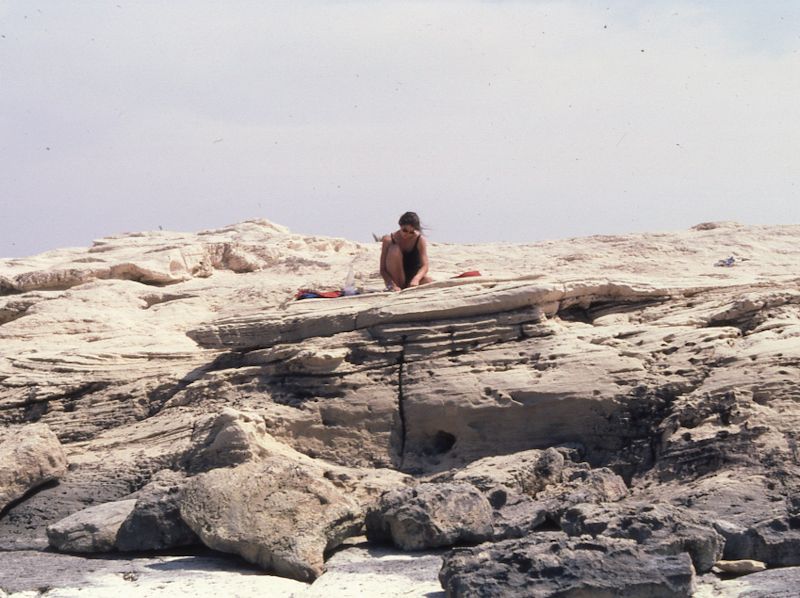
.
. . was not in the cards. The sea is knee-deep halfway to Italy. About
the only thing the seaside seems good for is postcard-writing (above) and reclining
on the beach, inside the chain-link fence, with genuine-Tunisian waiters hovering
about ready to refill one's cool drink and stick a new little umbrella in it.
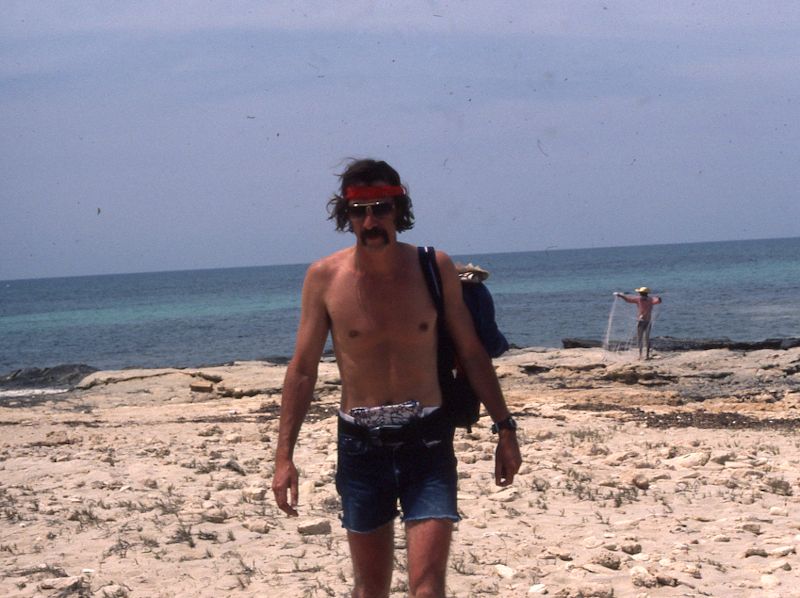
So the
travelers packed up their kit and money belt and hiked back through the Zone Touristique
to Houmt Souk for another evening of television in the town square, featuring
Uncle Habib.
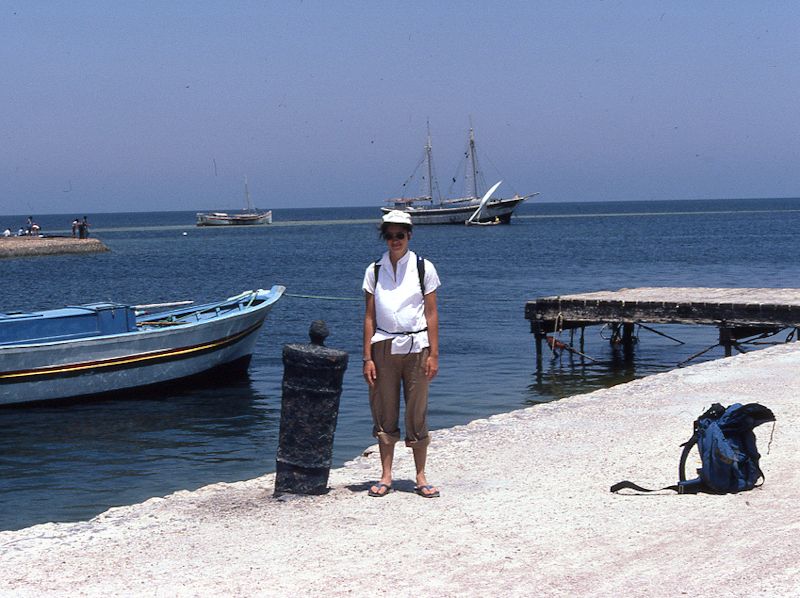
Houmt
Souk proved a rewarding locus for a lengthy sojourn, with its 16th
century castle, its tidy fishing port (where the cannons
are put to better use than cannons usually are), and of course its bustling souk,
or market, where, at 4 p.m. every afternoon, LandRovers from the Zone Touristique
brought excited shoppers out from behind the chain-link fences and turned
them loose on the market stalls for precisely an hour. At which time, a whistle
sounded, the LandRovers filled up again, and back they went behind the chain-link
fences.
Also
within a short bus ride from Houmt Souk are a few of the last Jewish villages
in North Africa, these dating back nearly 2,000 years. (One of them, alas, the
scene of a demento truck-bomb attack on an ancient synagogue in May 2002.)
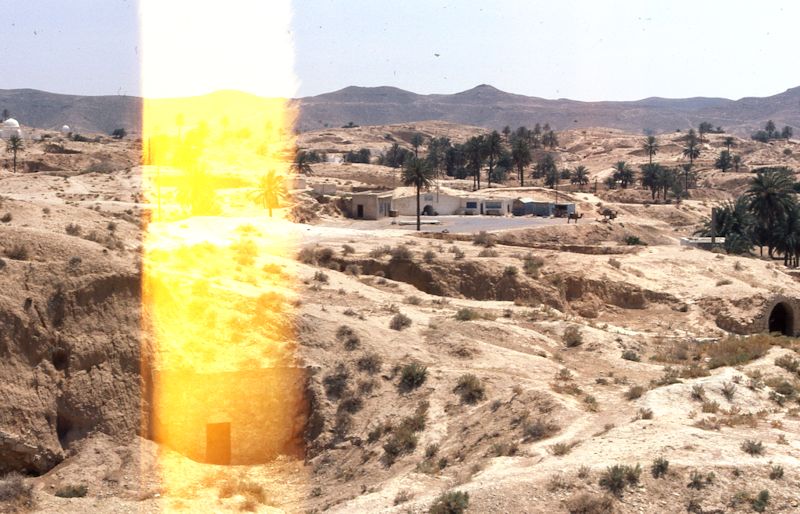
Leaving
the Isle of Djerba at last, the travelers took a bus back to the city of Gabès
on the coast, and thence another bus southward to the village of Matmata,
where the people live mostly underground. Those holes in the ground are the central
courtyards of houses of all kinds, with rooms leading off from them, much much
cooler than at ground level.
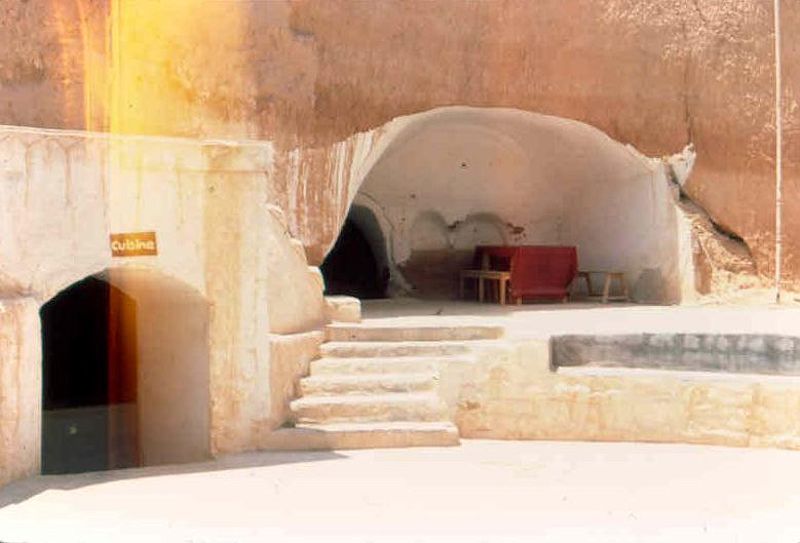
Matmata: Even the hotels are underground, as this one (with the 'cuisine', or kitchen,
on the left. In this former French protectorate, many Tunisians speak French.).
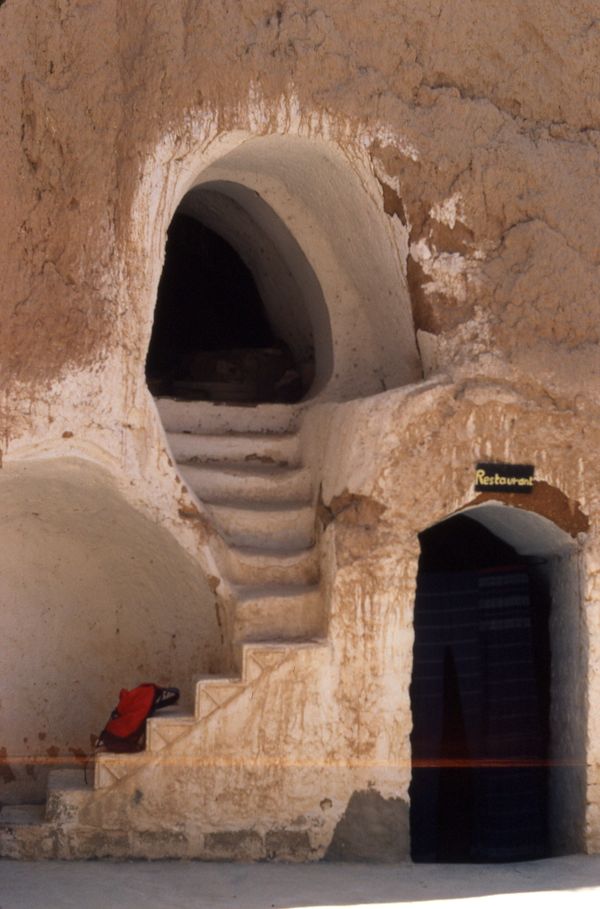
Matmata
hotel: The restaurant on the right, and the rooms just up the stairs.

A
nearby army post keeps a watchful eye on things. The underground
dwellings look as if they've been occupied since the Stone Age, but in fact, until
the French brought order to the region and established a protectorate in 1881,
warlords and bandit gangs roamed the area freely, and the villagers lived atop
these more defensible hills.

A
hike up one of those hills proved a daunting job of work in 40°C midday sun.
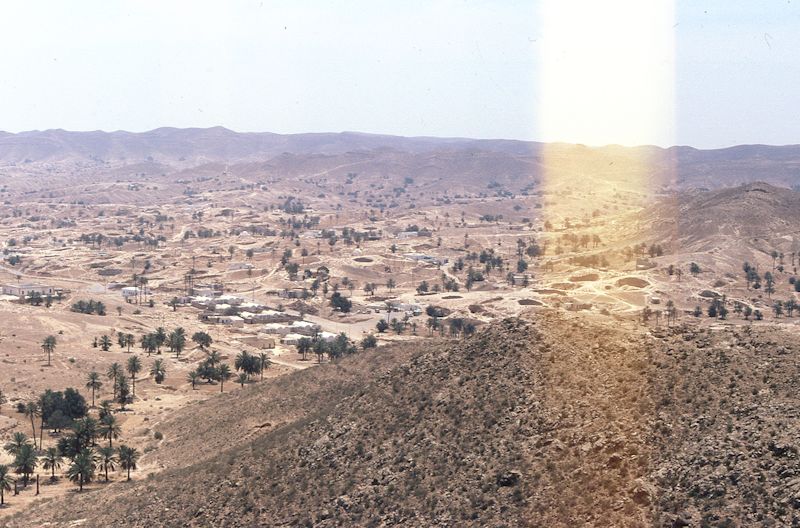
Matmata,
from the top of the hill in the photo below
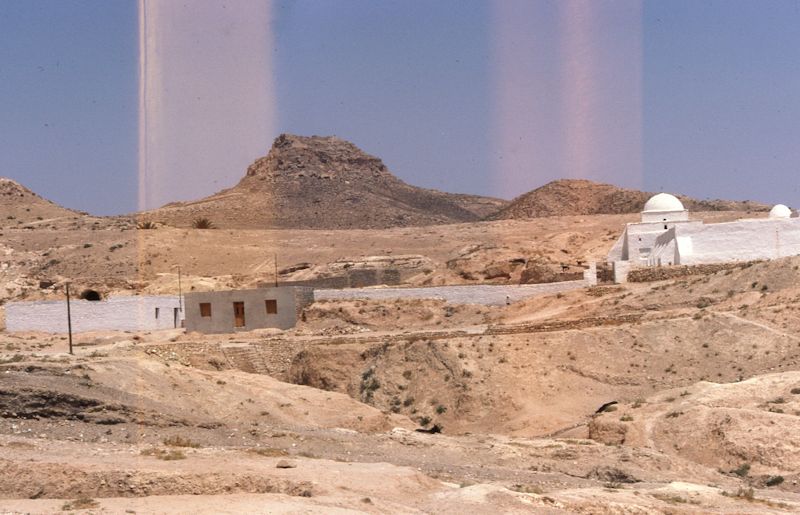
So this
particular peak did not see the entire party reach the summit on that particular
day, and the travelers then trod their way back past the army post . . .

.
. . and took their leave of Matmata and its camels and date palms. Back to Gabès
it was then, and by late night train westward through Gafsa, in the interior,
and southwestward to Tozeur near the Algerian border,
on the edge of the Chott El Jerid.
Tozeur
and Nefta, oasis towns in western Tunisia

And here,
from one of the twin towers called the Belvedere on the outskirts of Tozeur, is
a look out southward over the Chott El Jerid, a dry salt lakebed as far as the
eye can see.
[And in November 2007, the Chott El Jerid became a Ramsar Wetland of International Importance. Not very wet, usually, but
all the more important for that in this arid land.]
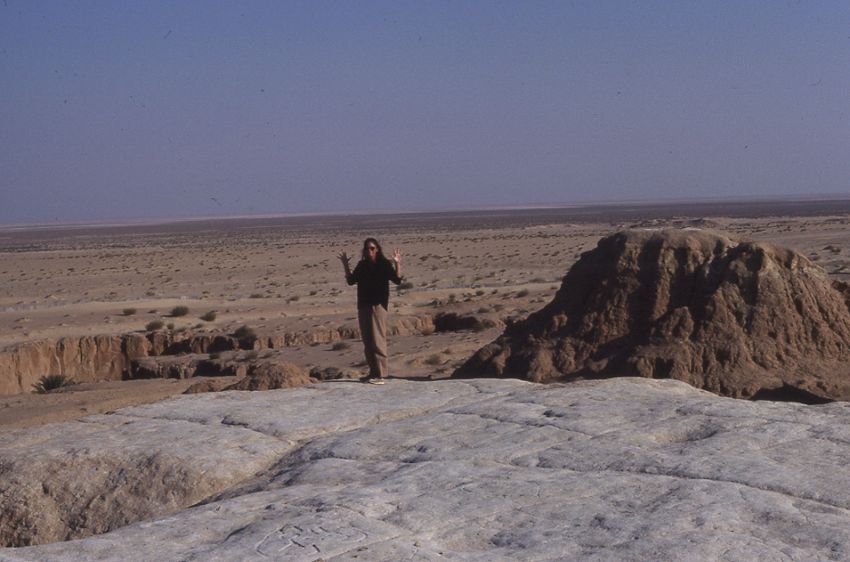
Our
traveling companion on the Belvedere, near Tozeur,
the Chott El Jerid stretching out behind. For the first time, the heat began to
take its toll, and the travelers decided to upgrade briefly to a two-star ($10)
hotel to recuperate . . .
Tozeur
old and new. The photo on the right was originally entitled "Two
Donkeys" but has since been renamed "Traveling
Companion in Front of Esso Station, Tozeur".
The
old days of the muezzin seem to be long gone, when
some sorry chap climbed up there at 5 a.m. or thereabouts and started singing
out about mandatory prayers, etc., etc. Now, the sound of a skipping
record comes over the loudspeakers for about 15 seconds, then the call to prayer,
then a thwup thwup skipping sound, and then somebody
abruptly turns it off. Throughout most of the day and well into the night. A powerful
lot of praying going on over there.

On by
bus to Nefta, perched precariously upon its oasis
near the border with Algeria. Nefta encircles on three sides a deep sand pit,
at the bottom of which lies the water and whatever can be made to grow with it,
namely date palms. The sand, which is otherwise ubiquitous, also seeks to fill
up the pit, and if it should ever make any progress at all, Nefta is no more.
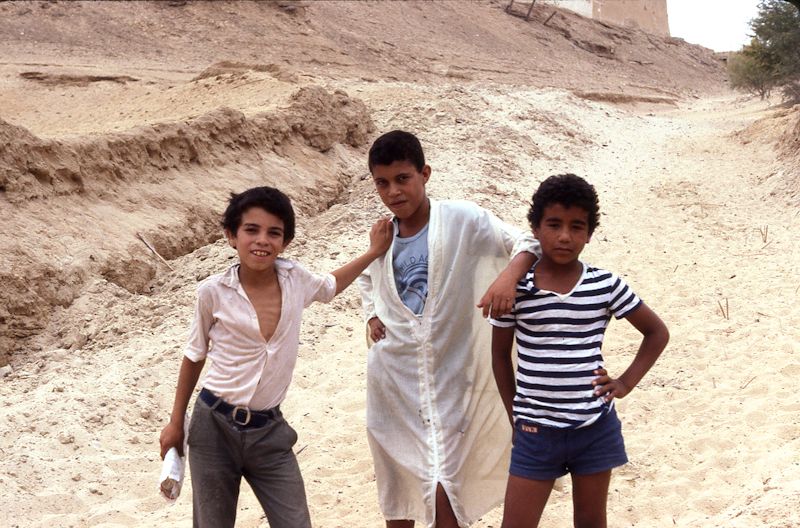
Young
guides preparing to lead the travelers down into the oasis for the Grand Tour
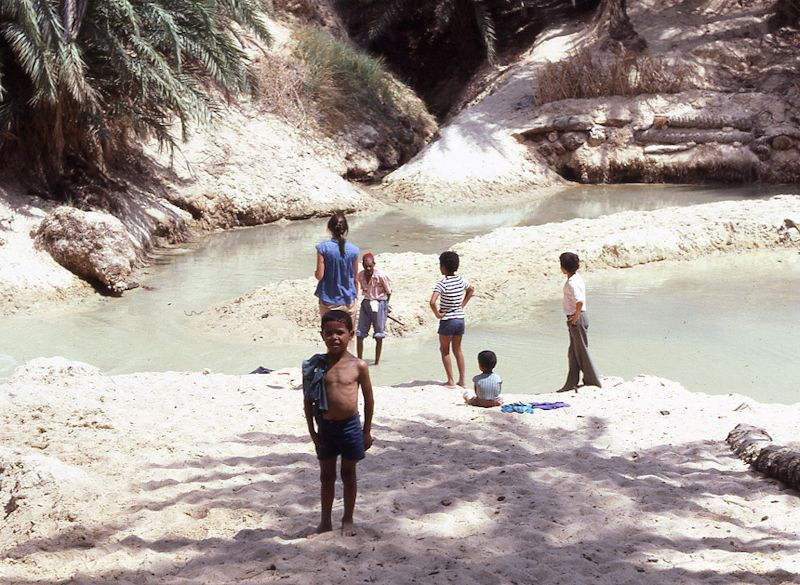
Traveling
companion Jane and the guides view the oasis at the bottom of the pit.

Work
gangs from the town labor right round the clock, night and day, to keep the channels
free of sand.
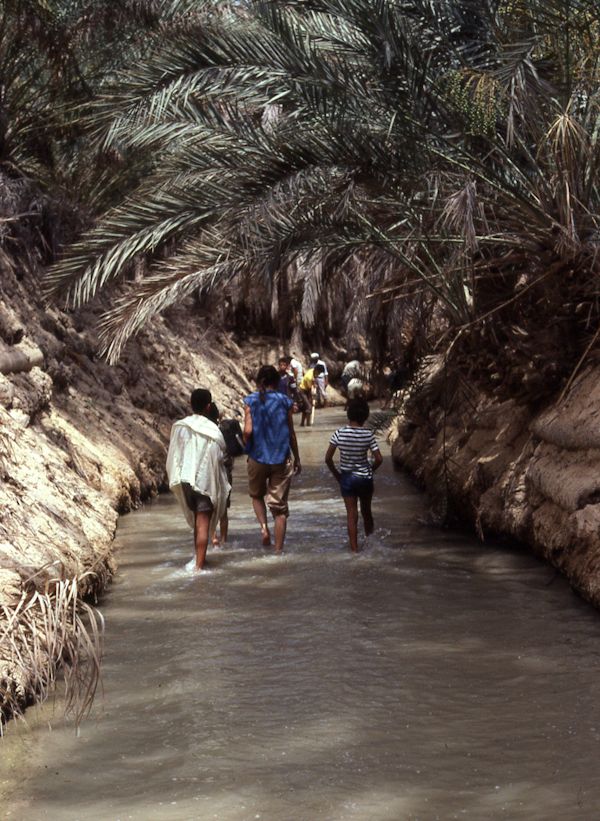
Jane
and the guides passed any number of work gangs in their explorations -- the water
channels are the only passage through the palm forest.
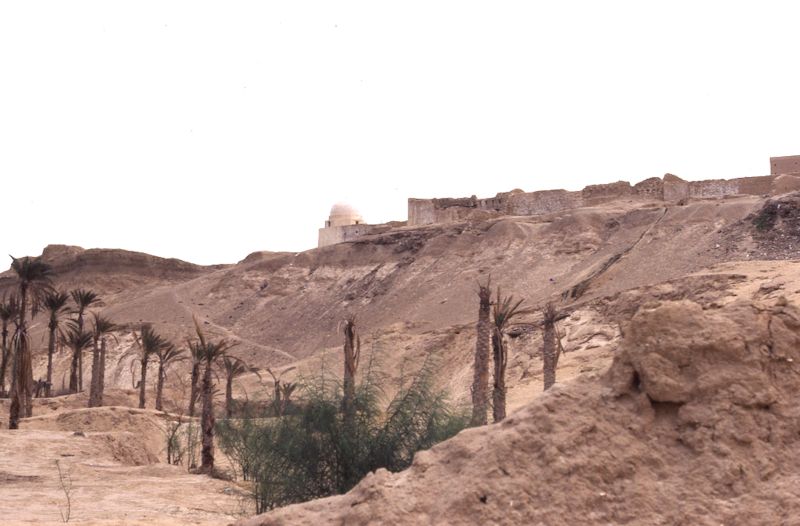
Looking
up out of the oasis, the marabout on one side of the circle
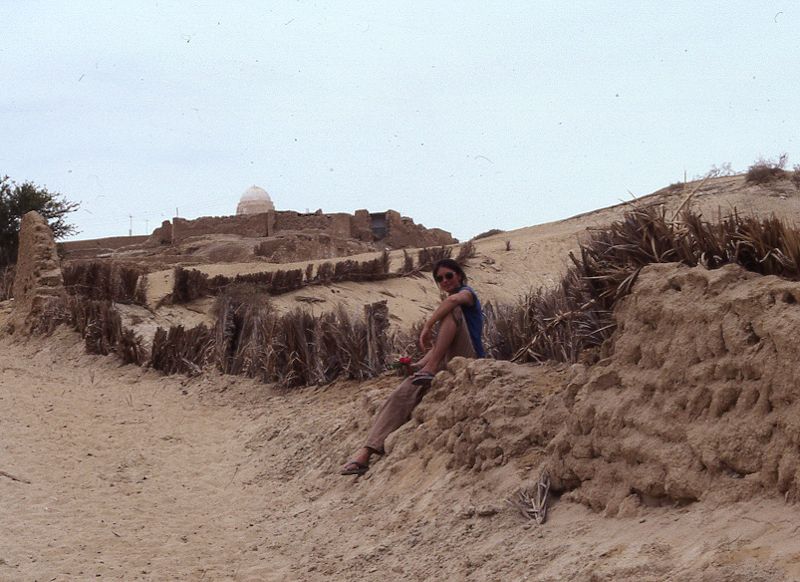
The
Vision of Nefta
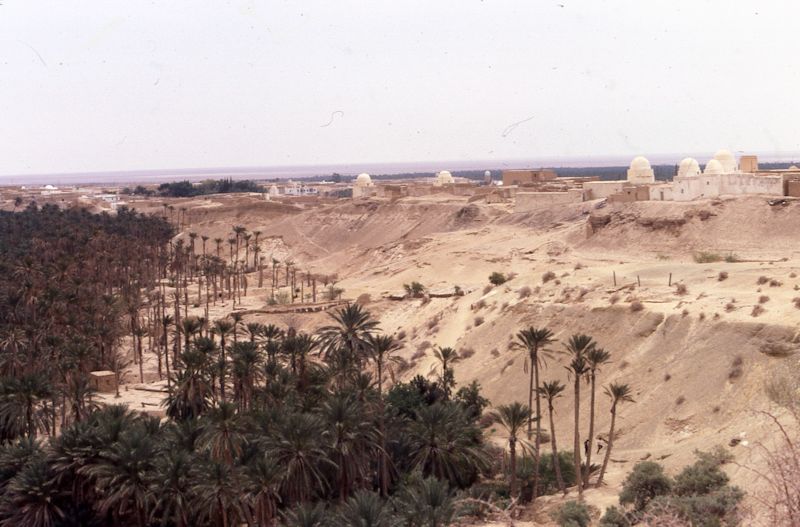
Nefta: The oasis, and the surrounding town
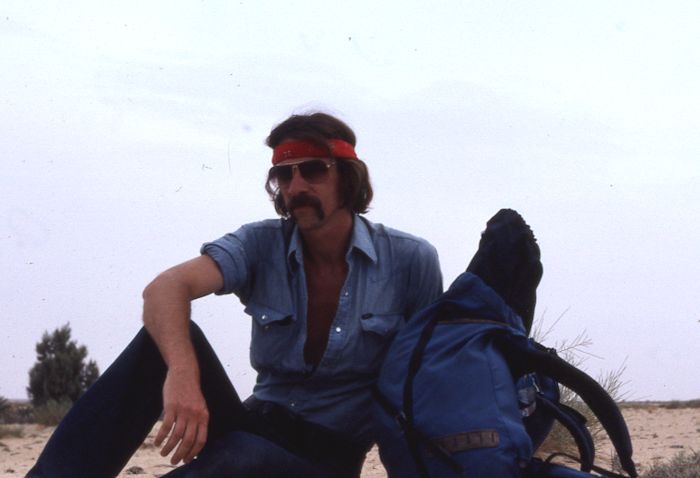
Waiting
for a bus on a hot afternoon in western Tunisia

The
11 p.m. train leaving Tozeur for the coast -- it stopped for a few hours in the
middle of the night to wait out a very gritty sandstorm, and then carried on to
Gabès. The train trip across the country cost the equivalent of a couple
of US dollars at that time.
Seeking
more islands in the Med
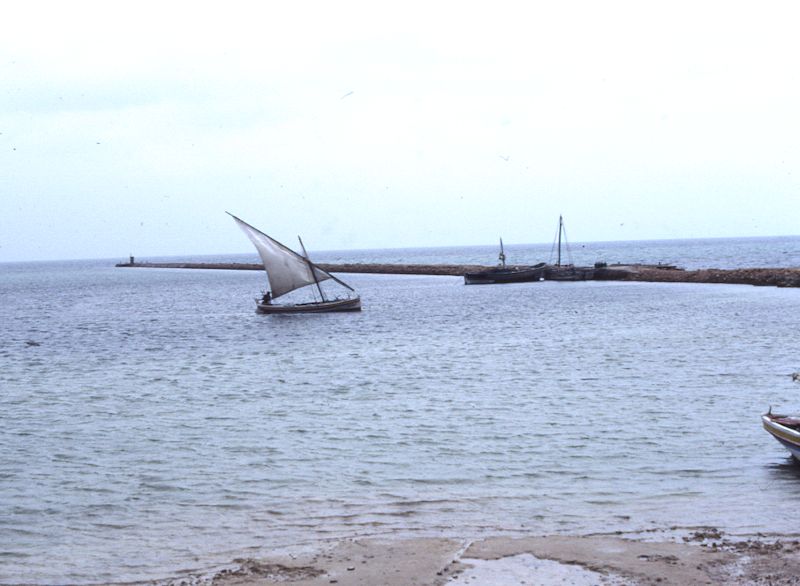
The
Kerkenna Islands, by ferry from the city of Sfax, with growing tourism
now but back in 1981 mostly just fishing. Here, the boats were coming in at evening,
seen from the beachside hotel, which made up in scenic views for what it lacked
in cleanliness.
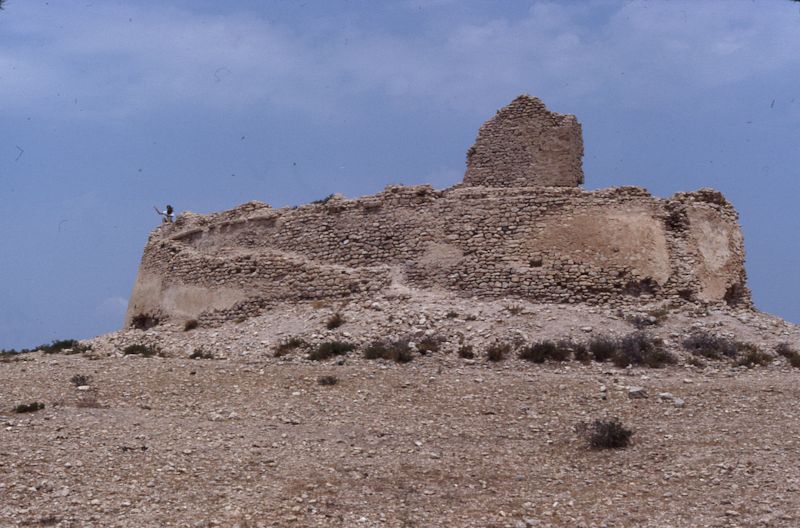
Another
Spanish fort, this one on the Kerkenna Islands, and
in worse repair than El Borj at Houmt Souk. Our companion can be seen waving as
if Barbary pirates had been sighted on the horizon.

The
lookout on the Spanish fort
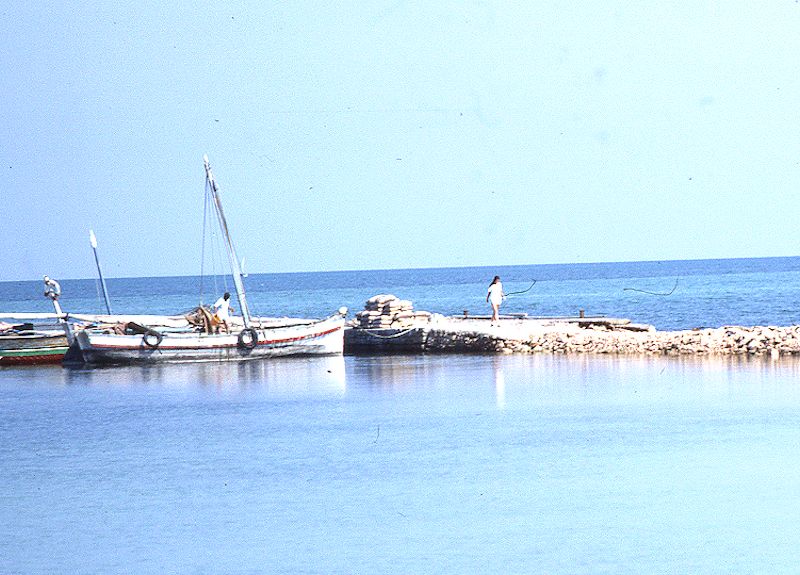
Traveling
companion viewing fishing boats getting ready to head out in the morning, Kerkenna
Islands, 1981
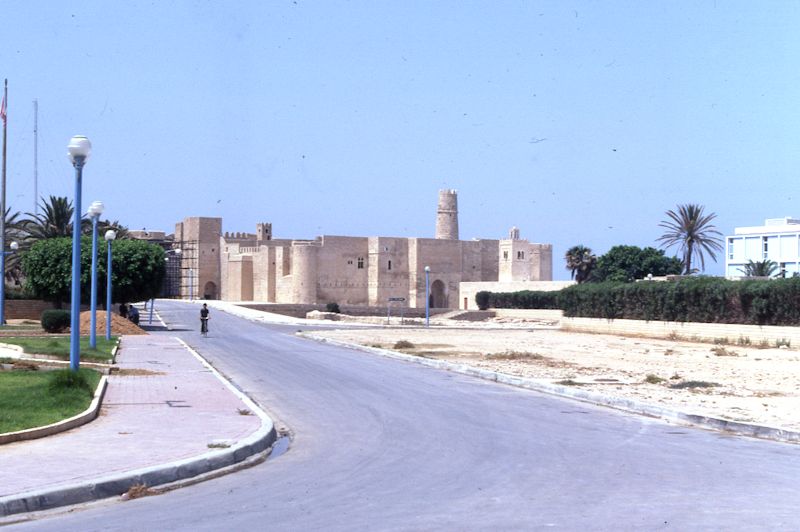
Moving
northward, the travelers stopped in to see how the rabat in Monastir
has been holding up over the years. This is the birthplace of Habib Bourguiba,
so it matters.
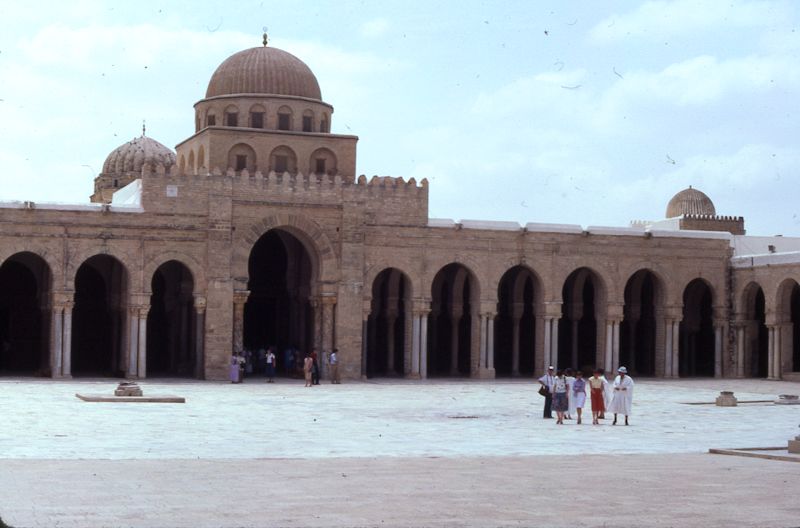
And then
westward again -- public transport in Tunisia, at least in 1981, might as well
have been free -- to the Grand Mosque at Kairouan,
which is, like, the fourth holiest mosque in Islam (after Mecca, Medina, and Jerusalem). (Seven visits to Kairouan = one visit to Mecca!)

Another
photo of the Grand Mosque at Kairouan, founded in A.D. 670. The new holy
benefits of having made the pilgrimage have not yet taken effect at this
point, and the travelers considered whether it would be more economical, rather
than to come back here seven times, just to go along to Mecca once. At least for
a look-in.
 Dwight
Peck's p
Dwight
Peck's p




























